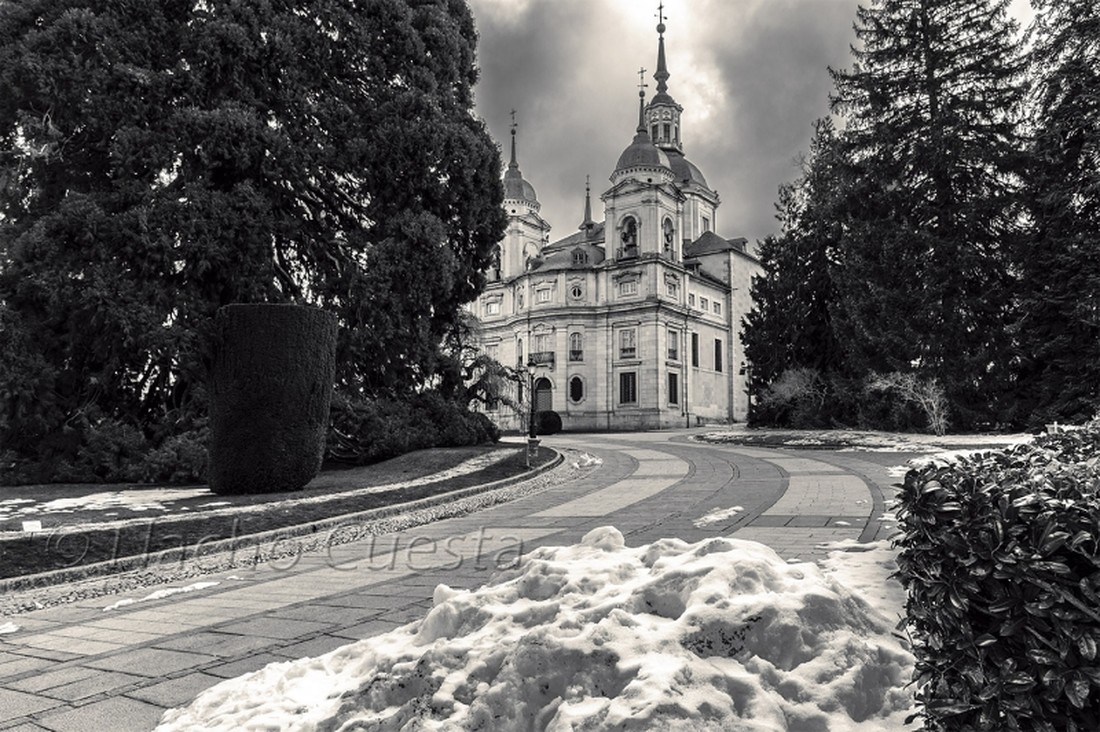We begin these post about the gardens of "La Granja", with a brief description about the municipality in question.
The Real Site of San Ildefonso (also known as La Granja or La Granja de San Ildefonso), is a municipality in the province of Segovia (Castilla y León-Spain), located at the foot of the sierra de Guadarrama, to 11kms. Segovia and 77kms. of Madrid.
Its historic town centre is declared as Monumental historical set. Besides its mountains and pine forests are part of the Natura 2000 network and declared by the UNESCO biosphere reservation.
Compose the municipality populations of La Granja, La Pradera de Navalhorno, Valsaín and Riofrio. Adding together all a population (the year 2010) of 5,700.
The town of La Granja, is born and grows attached to the Royal Palace which was built for King Felipe V.
Apart from Palace and gardens (which we will deal in other entries), in the village of La Granja include other monuments as the Royal glass factory, created in 1727 in an impressive industrial building that is still in good condition and which today houses the technological Museum of glass, a research and documentation centre and a school workshop, all dedicated to the glass.
Also inside of what the town has built buildings of the 18th century to give service to the Palace itself and its workers, as the old royal stables, House of canons, the trades House, House of infants, which today is the National Parador, or Corps of guards, that currently the Palacio de Congresos is located. Others such as the Palace of Bauer, or churches of Sorrows, the Christ of forgiveness and San Juan Nepomuceno, the Royal Polo field and the two gateways to the population.
Nacho Cuesta Tomás
links of interest:
http://www.lagranja-valsain.com/
http://www.realfabricadecristales.es/
http://www.patrimonionacional.es/real-sitio/palacios/6252
http://www.patrimonionacional.es/real-sitio/palacios/6253
http://www.turismorealsitiodesanildefonso.com/


Bravo, pour ce magnifique travail.
Sus orígenes proviene del siglo XVIII, cuando el rey Felipe V, el primer borbón, decidió construir este lugar histórico porque era aficionado a la caza, me suena al Emérito actual, cazador de elefantes jajaja, y le gustó tanto el lugar, que se puso manos a la obra y construyó el palacio, bueno mandó construir, qué tampoco está mal escrito, porque la definición de constructor es alguien que idea, proyecta y busca financiación para la realización de un proyecto de obra, y no poniendo las piedras directamente jajaja, que terminó en el año 1721, osea que va a hacer 300 años de su inaguración. El nombre de la Granja viene porque el anterior palacete fue cedido a los monjes Jerónimos durante siglos desde los reyes Católicos, que utilizaron el lugar como granja para cultivar hortalizas, frutales y cria de ganado para carne y leche. El moncarca Felipe V quiere disfrutar de unos imponentes jardines, para lo que se agencia de unos paisajistas franceses, para hacerlo parecido al de Versalles, salvando las distancias claro, con multitud de fuentes, bien sabido es que la casa Borbón es de orígen francés, hasta 26 me contaron que había en los jardines.
Lo que más me llamó la antención, es que antes de entrar en el palacio y los jardines, hay varios árboles tan antiguos como lo demás, que son inmensos, de gran valor medioambiental. Una secuoya de casi 50 metros de altura con un tronco de casi 10 metros de perímetro en la base del tronco, y también un pinsapo y unas cupresaceas de incienso descomunales, preciosos árboles. Para mí tan importantes como el resto.
Un bonito lugar para el esparcimiento y el disfrute del cuerpo y los sentidos, con una buena comida y con un vino de la zona, solamente puedo decir que fue extraordinario.
ARTURO KORTÁZAR AZPILIKUETA MARTIKORENA ©